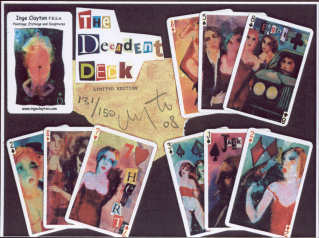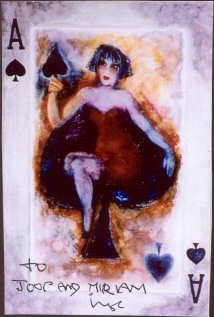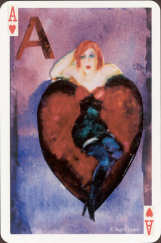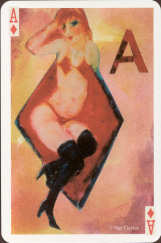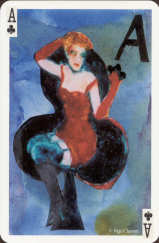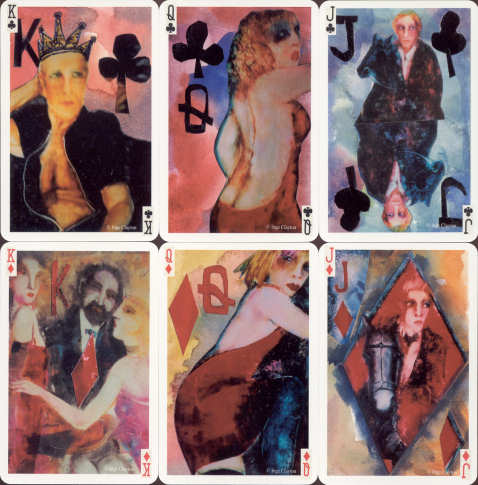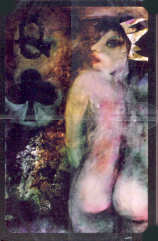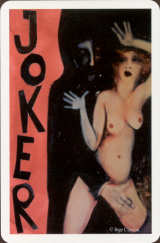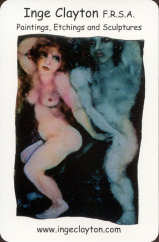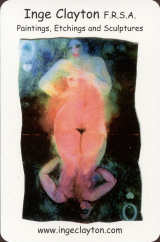|
|
The Art of Inge Clayton
Inge
Clayton has lived and worked in London since arriving from Austria in the
sixties. She studied life drawing, collage and printmaking at the Camden
Arts Center and soon developed her individual style, though traditional
concepts of beauty do not interest her. |
|
Two hundred and eighty double decks have been printed by Richard Edward (UK) and were published in December 2006 by the artist. She had already sold very well, when a friend suggested she should make it a limited and numbered edition too. By that time she had only 150 double decks left. They come in a transparent, plastic double box. Only 10 sets came as a special edition in a Luxury Presentation box, with silk lining.
|
But we think
that the artist must also be an active participant in the party scene. Only
a frequent visitor of (private) clubs and parties can distinguish the poses
from the unveiled emotional expressions that go with the territory. Artists
are often keen observers and Inge brings this combination to the canvas in a
brilliant way. It is naturally assumed that works of art that exalt the eroticism of the female body must have originated in the eyes of a man, but Inge Clayton and her passion for the human form prove this assumption wrong. The eroticism of her work, however, is not simply contained in her subject matter. The contrast between the pale flesh of the veiled and exposed bodies and the darker potent space which envelopes them is ambiguous, yet seductive: in those tensions lies their enigmatic allure. Her figures may look at you, unabashed, a little startled, or may prefer to contemplate some dark corners of their soul, amused, pensive, or even with genuine ennui. When they abandon themselves, they surrender as much to the richness of the paint as to the viewer's eye. |
